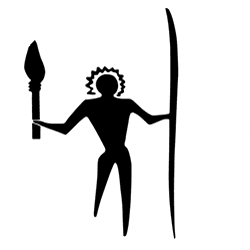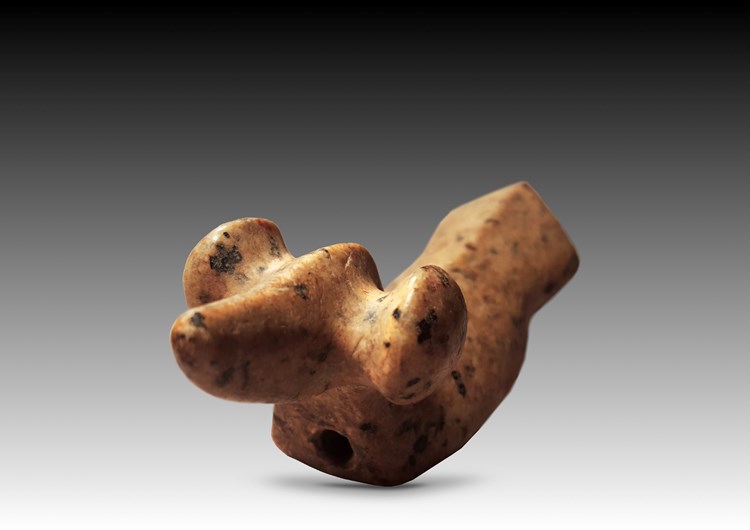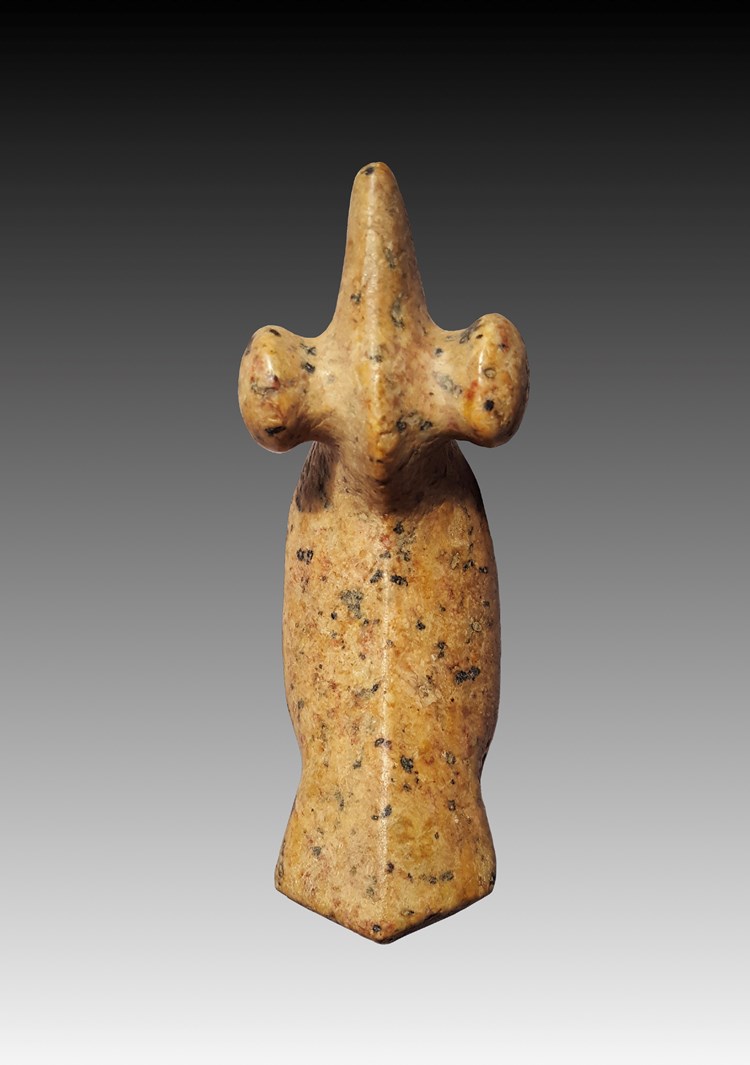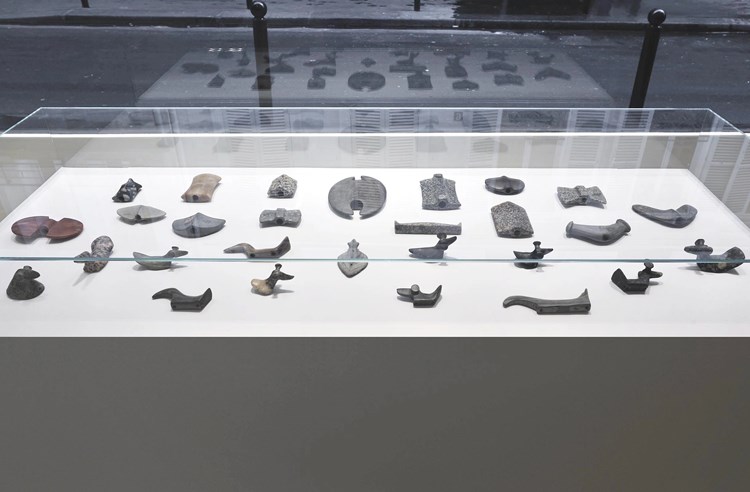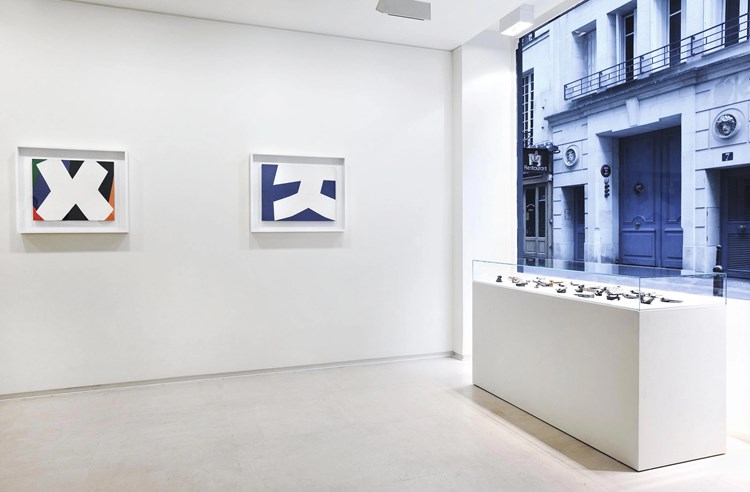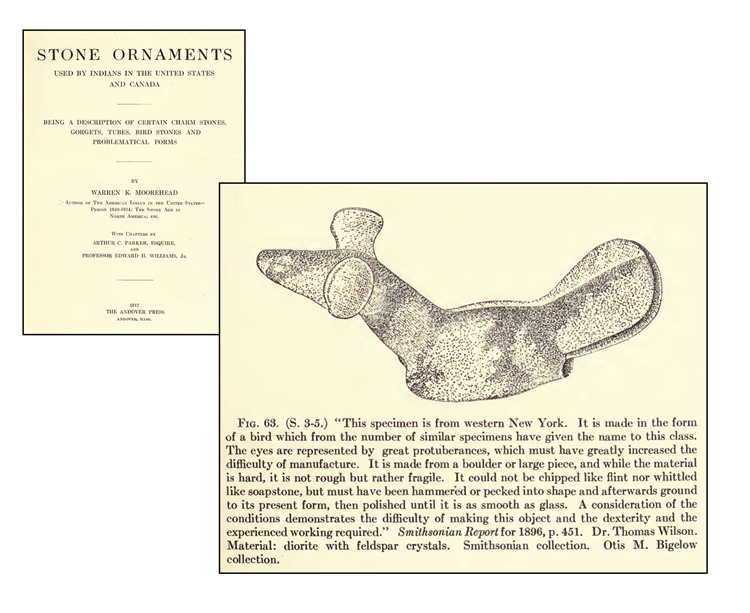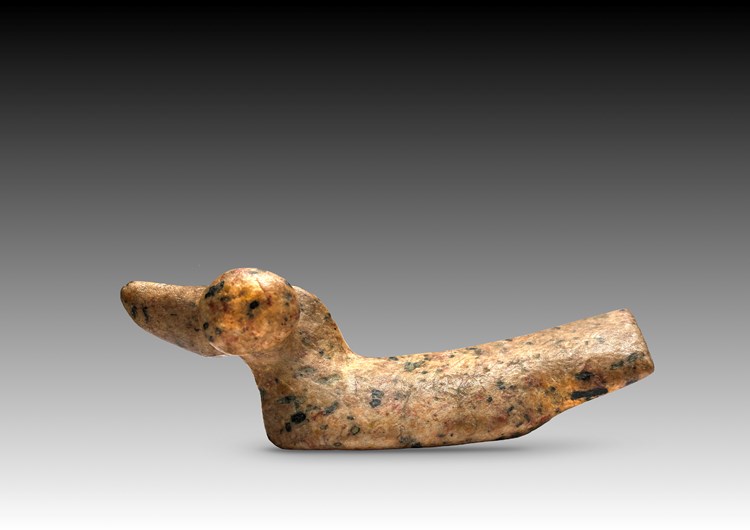Bird Stone
A Bird-stone with large circular eyes and a raised fantail. These enigmatic objects have long been thought to be the counterweight for the spear-thrower or Atlatl and are so described in the literature. However none have been found in that context nor showing the remains of some form of attachment to a section of what could be described as a spear-thrower. There are several different types of bird-stones which vary from the "pop-eye" model shown here through a variation of styles descending to a highly stylized and overly simplified silhouette. All are pierced with bi-conical holes on the underside either through the ends of the bottom slab or through raised ridges (two-bar type). They are found within burial sites or in relation to water or near humid ground. A new theory is developing that they were related in some way to water and to the preparation of reeds growing in the marsh lands for weaving. Only a handful of them have been found during the excavation of burials. Two-bar style bird-stones are reported to have been found in the head area of a single adult on the Baker II Late Archaic site in Sandusky County, Ohio. The Baker II site dates to the terminal Late Archaic period at 2,820 years ago. A popeyed style bird-stone is also reported to have been found during the excavation of an Early Woodland burial containing three individuals on the Danbury site in northern Ohio dating to around 2,500 years ago. Bust type bird-stones have also been reported from Early Woodland Adena mounds. Bird-stones are also associated with Glacial Kame sites.
Mississippian people, Moundbuilders cultures, North America. 1st Millennium B.C. – 1500 AD.
Pink & black speckled Granite with remains of earth
9,8 x 4 x 3,8 cm
Provenance Collection of Vladimir Sismann, France
Literature: See similar object : Daytona Art Institute, N° 1965.118.
The artist Ellsworth Kelly (1923-2015) began to collect birdstones and other lithic objects from the early Native American cultures after visiting the Peabody Museum of Archeology and Ethnography at Harvard Univeristy in 1954. Several of his monumental "totems" seem to be influenced by the advanced geometrics of banner stones and his personal love of birds is reflected in his pursuit of superb bird-stone counterweights from the archaic Mound Builders culture in the Eastern United States. In 2012 Cahier d'Art the magazine and eponymous gallery on rue du Dragon in Paris offered a selection of paintings by Kelly along side a curated group of his Bird-stones. Other well known collectors are the Swiss art dealer Jan Krugier of Geneva as well as Staffan Ahrenberg the collector and owner of the magazine Cahiers d’Art.
Ref. :
Les bannerstones et les birdstones - Richard F. Townsend in Cahiers d'Art, Octobre, numéro 1 de la trente-sixième année, 2012.
